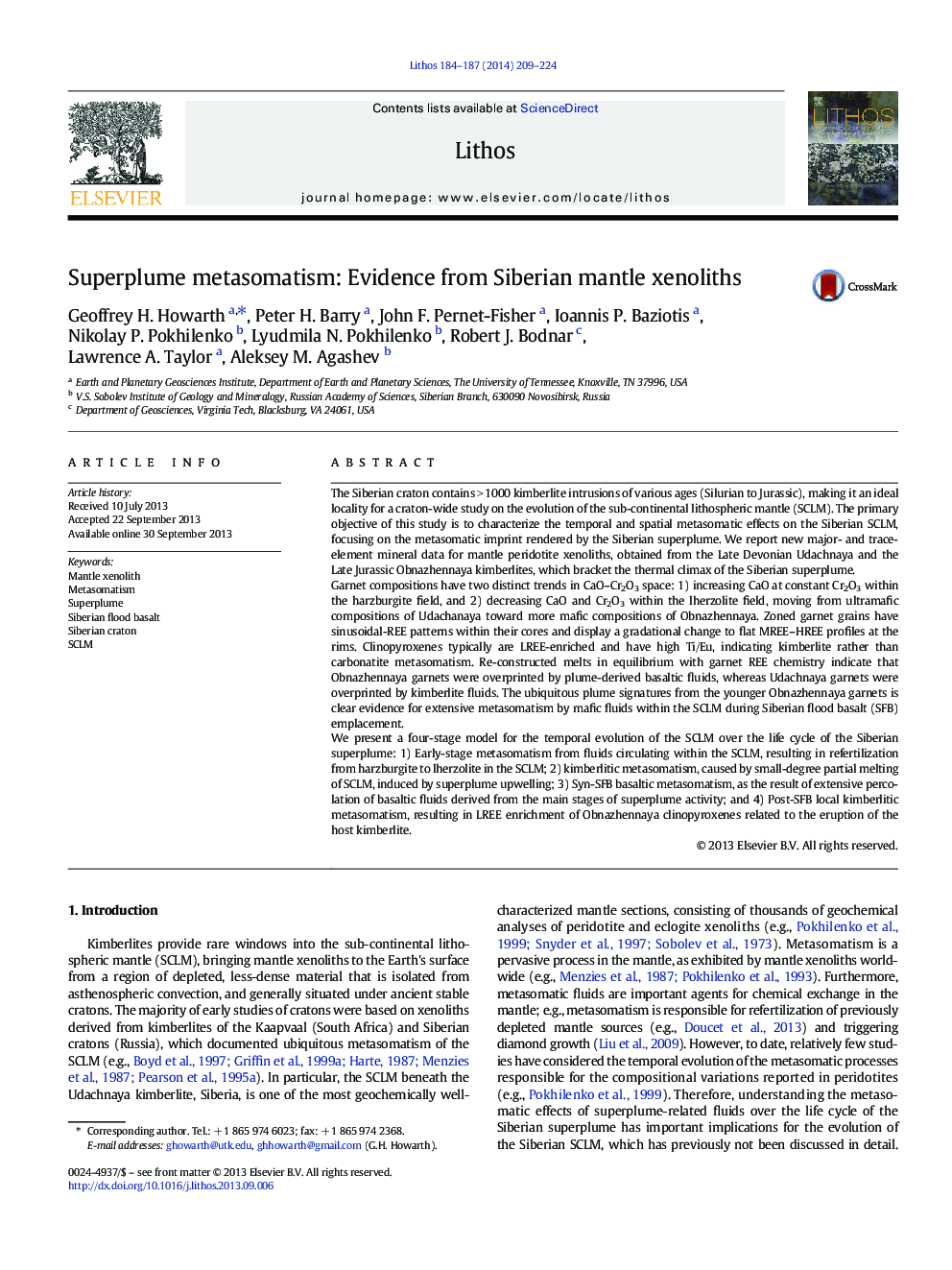| Article ID | Journal | Published Year | Pages | File Type |
|---|---|---|---|---|
| 4716129 | Lithos | 2014 | 16 Pages |
•We analyze garnet and clinopyroxene chemistry from Siberian mantle peridotites.•We examine the variation in chemistry before and after extrusion of flood basalts.•The chemical variation is linked to metasomatism in the SCLM.•A model is presented for metasomatism related to the Siberian superplume.
The Siberian craton contains > 1000 kimberlite intrusions of various ages (Silurian to Jurassic), making it an ideal locality for a craton-wide study on the evolution of the sub-continental lithospheric mantle (SCLM). The primary objective of this study is to characterize the temporal and spatial metasomatic effects on the Siberian SCLM, focusing on the metasomatic imprint rendered by the Siberian superplume. We report new major- and trace-element mineral data for mantle peridotite xenoliths, obtained from the Late Devonian Udachnaya and the Late Jurassic Obnazhennaya kimberlites, which bracket the thermal climax of the Siberian superplume.Garnet compositions have two distinct trends in CaO–Cr2O3 space: 1) increasing CaO at constant Cr2O3 within the harzburgite field, and 2) decreasing CaO and Cr2O3 within the lherzolite field, moving from ultramafic compositions of Udachanaya toward more mafic compositions of Obnazhennaya. Zoned garnet grains have sinusoidal-REE patterns within their cores and display a gradational change to flat MREE–HREE profiles at the rims. Clinopyroxenes typically are LREE-enriched and have high Ti/Eu, indicating kimberlite rather than carbonatite metasomatism. Re-constructed melts in equilibrium with garnet REE chemistry indicate that Obnazhennaya garnets were overprinted by plume-derived basaltic fluids, whereas Udachnaya garnets were overprinted by kimberlite fluids. The ubiquitous plume signatures from the younger Obnazhennaya garnets is clear evidence for extensive metasomatism by mafic fluids within the SCLM during Siberian flood basalt (SFB) emplacement.We present a four-stage model for the temporal evolution of the SCLM over the life cycle of the Siberian superplume: 1) Early-stage metasomatism from fluids circulating within the SCLM, resulting in refertilization from harzburgite to lherzolite in the SCLM; 2) kimberlitic metasomatism, caused by small-degree partial melting of SCLM, induced by superplume upwelling; 3) Syn-SFB basaltic metasomatism, as the result of extensive percolation of basaltic fluids derived from the main stages of superplume activity; and 4) Post-SFB local kimberlitic metasomatism, resulting in LREE enrichment of Obnazhennaya clinopyroxenes related to the eruption of the host kimberlite.
